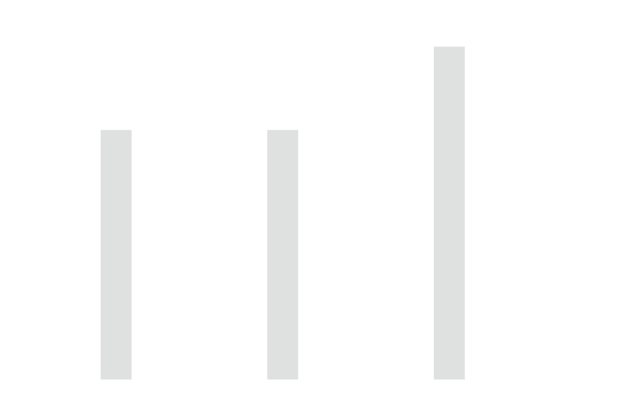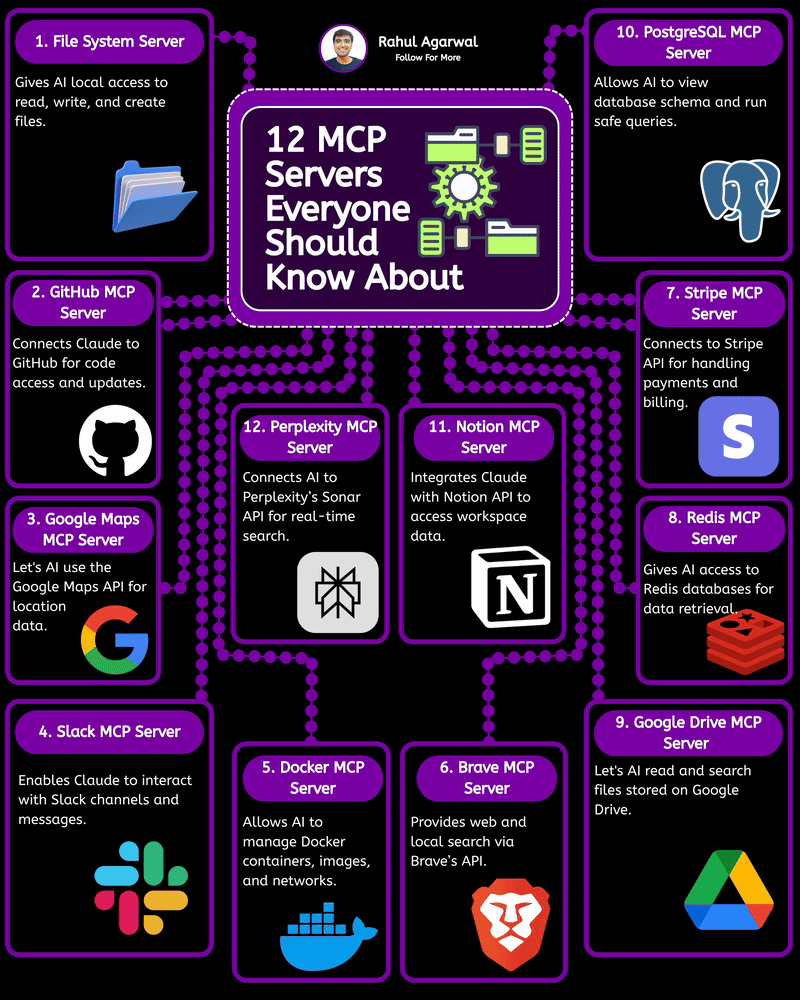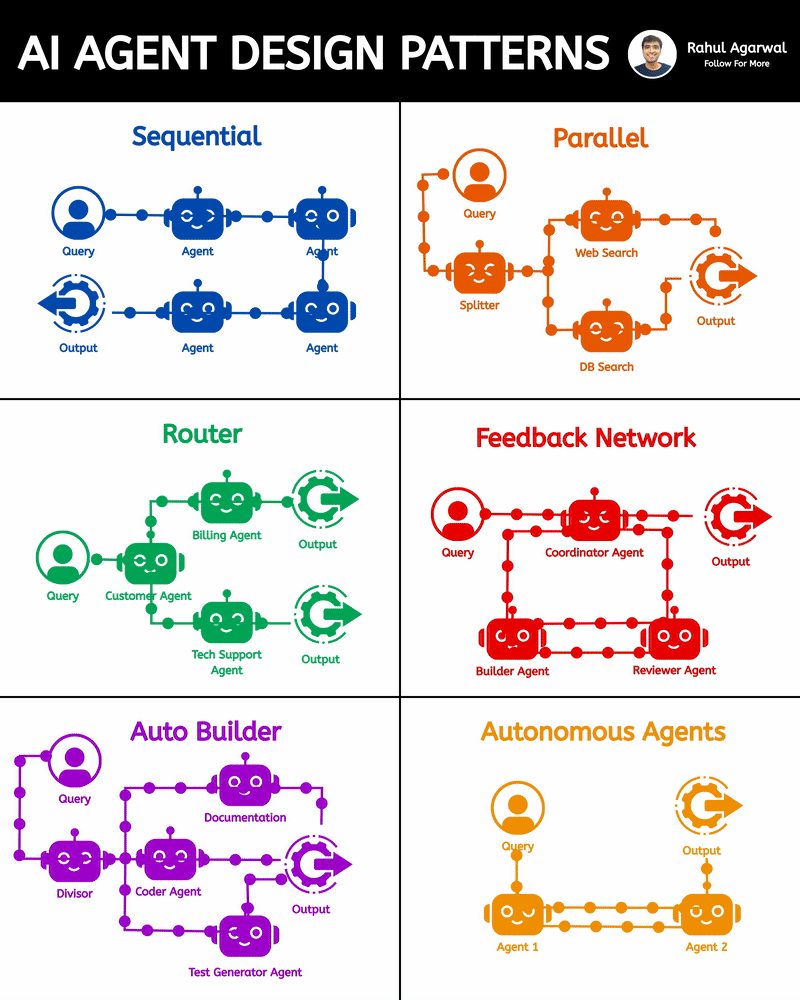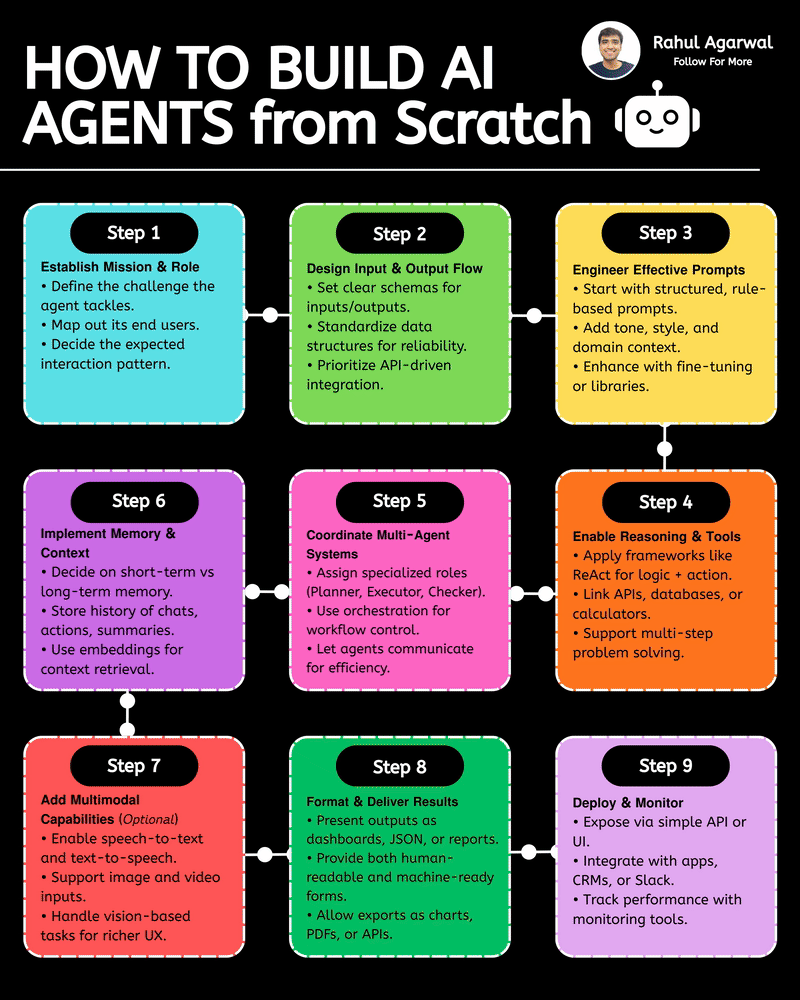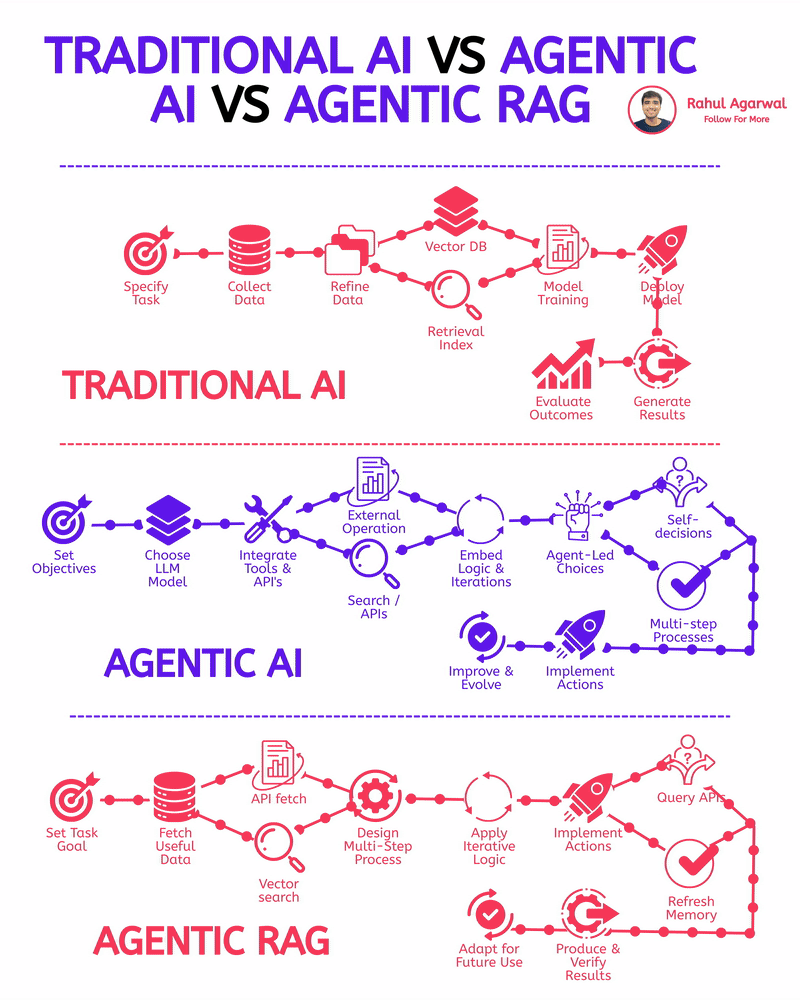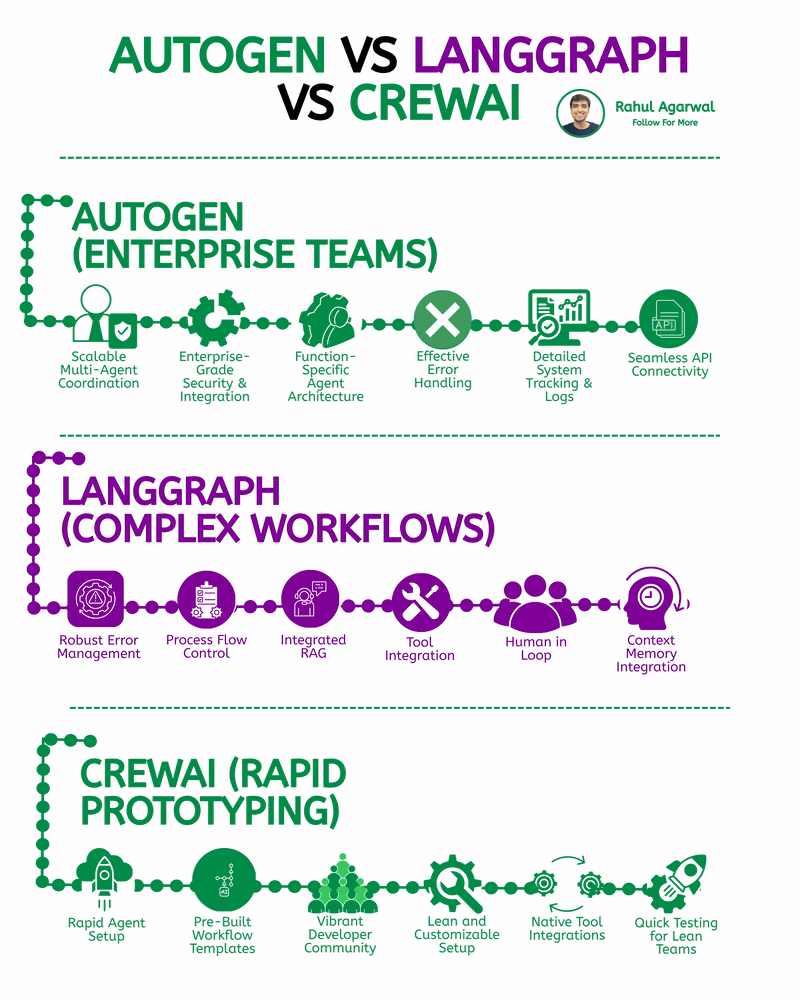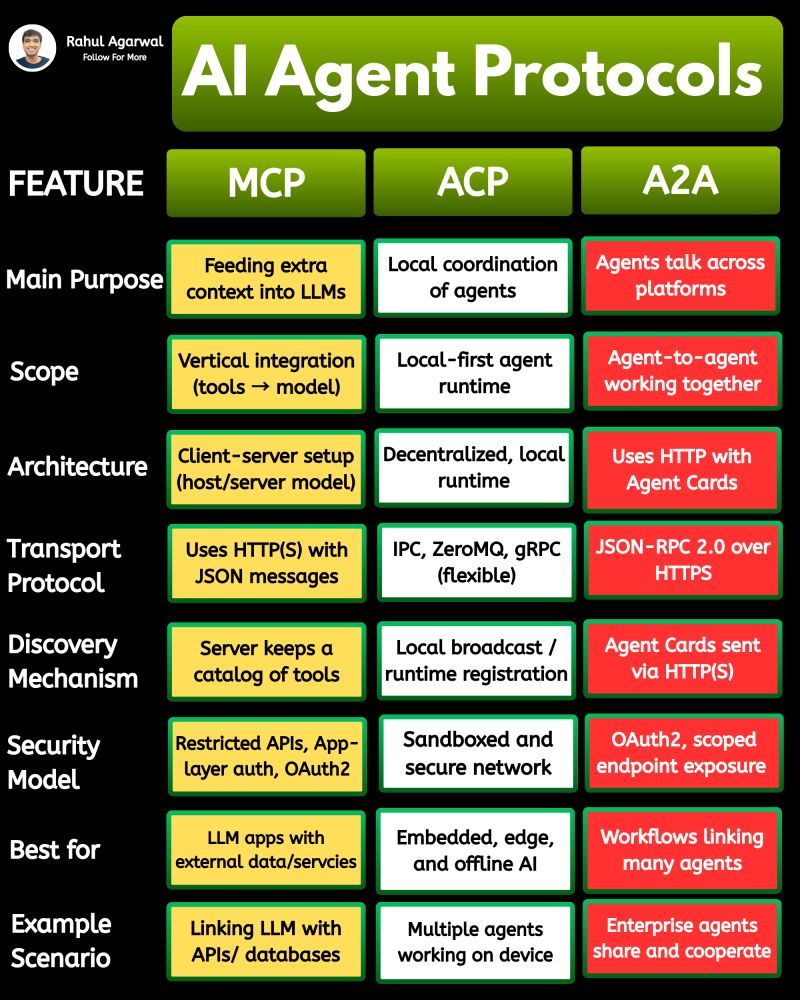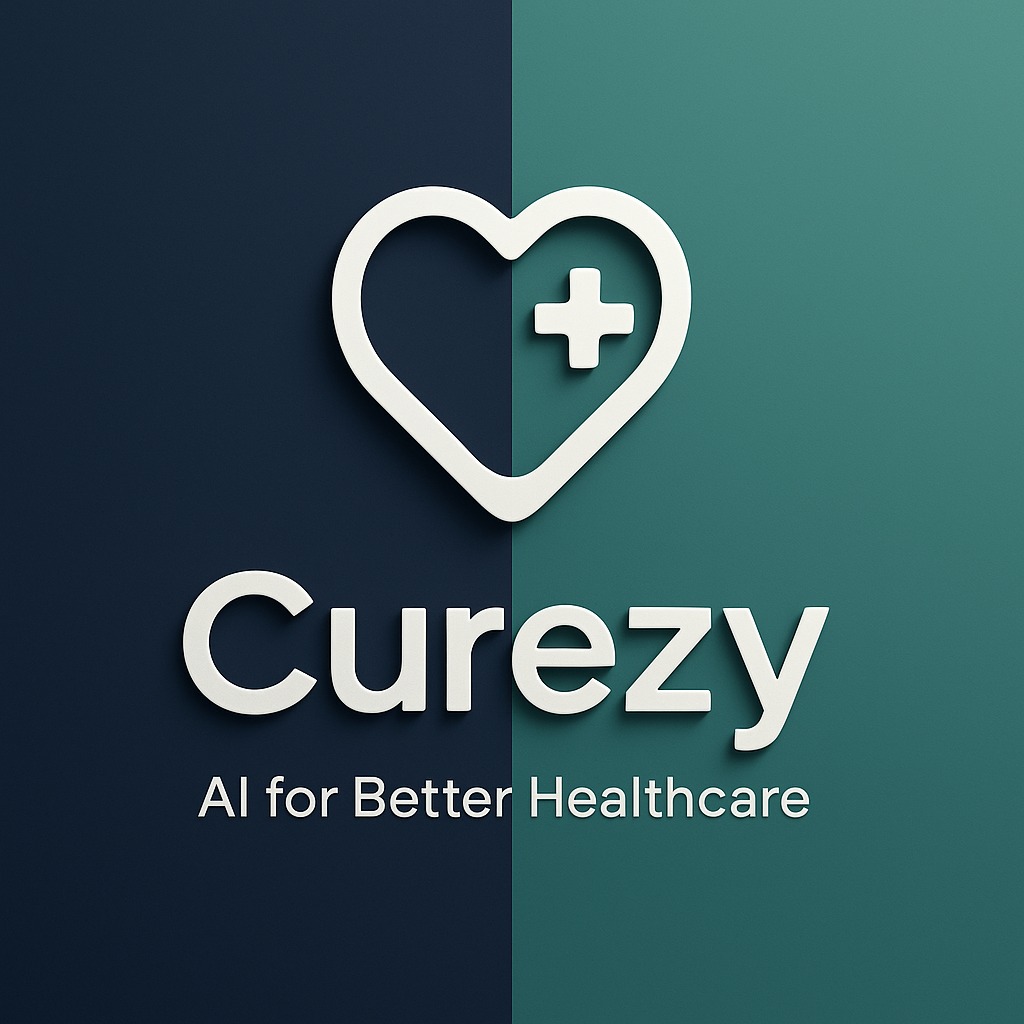Back
Rahul Agarwal
Founder | Agentic AI... • 3m
How Multi-Agent AI systems actually work? Explained in a very simple way. Read below: -> 𝗧𝗵𝗲 𝗠𝗮𝗶𝗻 𝗔𝗜 𝗔𝗴𝗲𝗻𝘁 The main 𝗔𝗜 𝗔𝗴𝗲𝗻𝘁 is the 𝗼𝗿𝗰𝗵𝗲𝘀𝘁𝗿𝗮𝘁𝗼𝗿. It has several capabilities: • 𝗗𝗮𝘁𝗮𝗯𝗮𝘀𝗲 – Stores knowledge or past responses. • 𝗙𝗲𝗲𝗱𝗯𝗮𝗰𝗸 – Learns from results and user interactions. • 𝗣𝗹𝗮𝗻𝗻𝗶𝗻𝗴 – Breaks down the query into smaller tasks. • 𝗠𝗲𝗺𝗼𝗿𝘆 – Remembers past interactions, results, and context. • 𝗥𝗲𝗮𝘀𝗼𝗻𝗶𝗻𝗴 – Makes logical decisions about what steps to take. • 𝗧𝗼𝗼𝗹𝘀 – Connects to external APIs, functions, or services when needed. This agent delegates tasks to 𝗔𝗴𝗲𝗻𝘁 1 and 𝗔𝗴𝗲𝗻𝘁 2. -> 𝗔𝗴𝗲𝗻𝘁 1 • Connected to an 𝗠𝗖𝗣 𝗦𝗲𝗿𝘃𝗲𝗿 → a vector database that allows it to 𝘀𝗲𝗮𝗿𝗰𝗵 𝘁𝗵𝗿𝗼𝘂𝗴𝗵 𝘀𝘁𝗼𝗿𝗲𝗱 𝗸𝗻𝗼𝘄𝗹𝗲𝗱𝗴𝗲 efficiently. • Has its own 𝗠𝗲𝗺𝗼𝗿𝘆 (for context/history). • Has 𝗣𝗹𝗮𝗻𝗻𝗶𝗻𝗴 ability (to decide what to fetch or compute). Think of 𝗔𝗴𝗲𝗻𝘁 1 as the 𝗸𝗻𝗼𝘄𝗹𝗲𝗱𝗴𝗲 𝗿𝗲𝘁𝗿𝗶𝗲𝘃𝗲𝗿 + 𝗽𝗹𝗮𝗻𝗻𝗲𝗿. -> 𝗔𝗴𝗲𝗻𝘁 2 • Connected to an 𝗠𝗖𝗣 𝗦𝗲𝗿𝘃𝗲𝗿 (𝗦𝗲𝗮𝗿𝗰𝗵) → this one interacts with 𝗲𝘅𝘁𝗲𝗿𝗻𝗮𝗹 𝘀𝗲𝗮𝗿𝗰𝗵 𝗲𝗻𝗴𝗶𝗻𝗲𝘀 𝗼𝗿 𝘀𝗲𝗻𝘀𝗼𝗿𝘆 𝗱𝗮𝘁𝗮 (real-time info). • Has 𝗠𝗲𝗺𝗼𝗿𝘆 (to keep track of what it found). • Has 𝗦𝗲𝗻𝘀𝗼𝗿𝘆 𝗗𝗮𝘁𝗮 (ability to process information from outside sources like live search, signals, or real-world sensors). Think of 𝗔𝗴𝗲𝗻𝘁 2 as the 𝗿𝗲𝗮𝗹-𝘁𝗶𝗺𝗲 𝘀𝗲𝗮𝗿𝗰𝗵 + 𝗲𝘅𝘁𝗲𝗿𝗻𝗮𝗹 𝗱𝗮𝘁𝗮 𝘀𝗽𝗲𝗰𝗶𝗮𝗹𝗶𝘀𝘁. 𝗛𝗼𝘄 𝗧𝗵𝗲𝘆 𝗪𝗼𝗿𝗸 𝗧𝗼𝗴𝗲𝘁𝗵𝗲𝗿 1. The 𝗤𝘂𝗲𝗿𝘆 is received by the main 𝗔𝗜 𝗔𝗴𝗲𝗻𝘁. 2. It decides: • If the query needs 𝘀𝘁𝗼𝗿𝗲𝗱 𝗸𝗻𝗼𝘄𝗹𝗲𝗱𝗴𝗲 → it asks 𝗔𝗴𝗲𝗻𝘁 1 (𝗩𝗲𝗰𝘁𝗼𝗿 𝗱𝗯). • If the query needs 𝗿𝗲𝗮𝗹-𝘁𝗶𝗺𝗲 𝘀𝗲𝗮𝗿𝗰𝗵/𝘀𝗲𝗻𝘀𝗼𝗿𝘆 𝗶𝗻𝗳𝗼 → it asks 𝗔𝗴𝗲𝗻𝘁 2 (𝗦𝗲𝗮𝗿𝗰𝗵). 3. Both agents send their processed information back to the main agent. 4. The 𝗺𝗮𝗶𝗻 𝗮𝗴𝗲𝗻𝘁 𝗿𝗲𝗮𝘀𝗼𝗻𝘀, 𝗽𝗹𝗮𝗻𝘀, 𝗮𝗻𝗱 𝗰𝗼𝗺𝗯𝗶𝗻𝗲𝘀 𝗿𝗲𝘀𝘂𝗹𝘁𝘀. 5. The system generates the 𝗳𝗶𝗻𝗮𝗹 𝗢𝘂𝘁𝗽𝘂𝘁 for the user. ✅ In short: You ask → Main AI Agent plans → Specialist AI Agents fetch/process info → Main AI Agent reasons & combines → You get the result. ✅ Repost with others in your network who want to understand this.
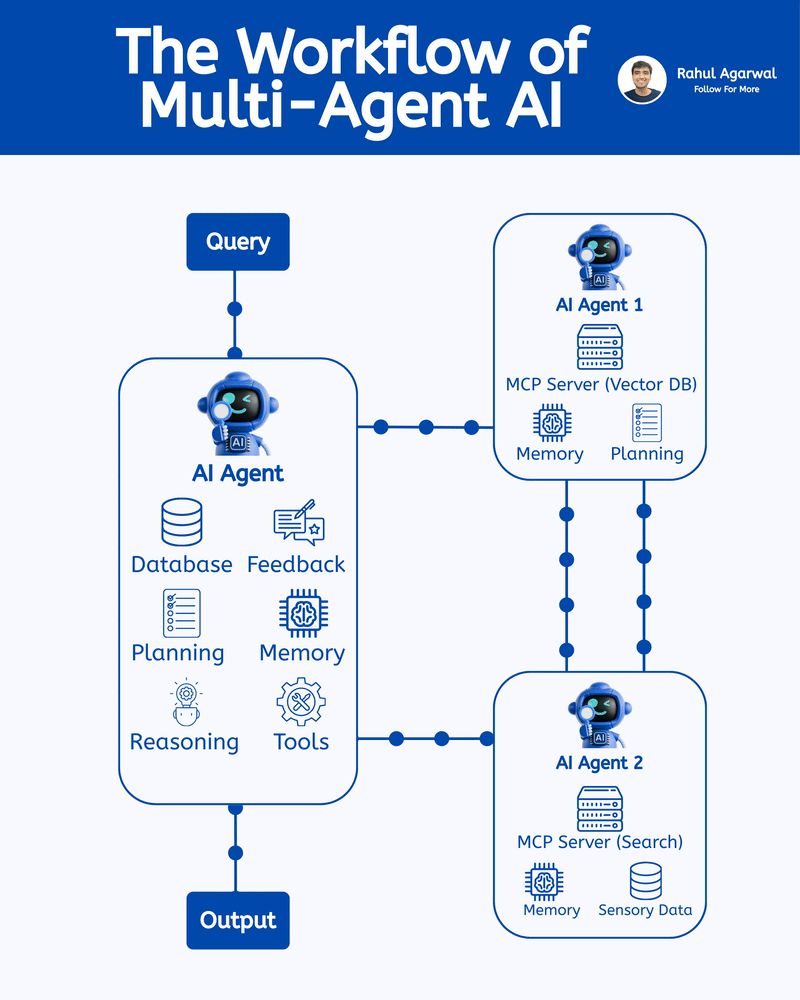
More like this
Recommendations from Medial
Rahul Agarwal
Founder | Agentic AI... • 8d
Hands down the simplest explanation of AI agents using LLMs, memory, and tools. A user sends an input → the system (agent) builds a prompt and may call tools and memory-search (RAG) → agent decides and builds an answer → the answer is returned to th
See More
Rahul Agarwal
Founder | Agentic AI... • 23d
If you’re building AI agents today, here’s the reality: Calling an LLM isn’t enough anymore. Modern agents need a full system, a framework of interconnected components that help them think, reason, act, adapt, and collaborate autonomously. Here are
See MoreDownload the medial app to read full posts, comements and news.

